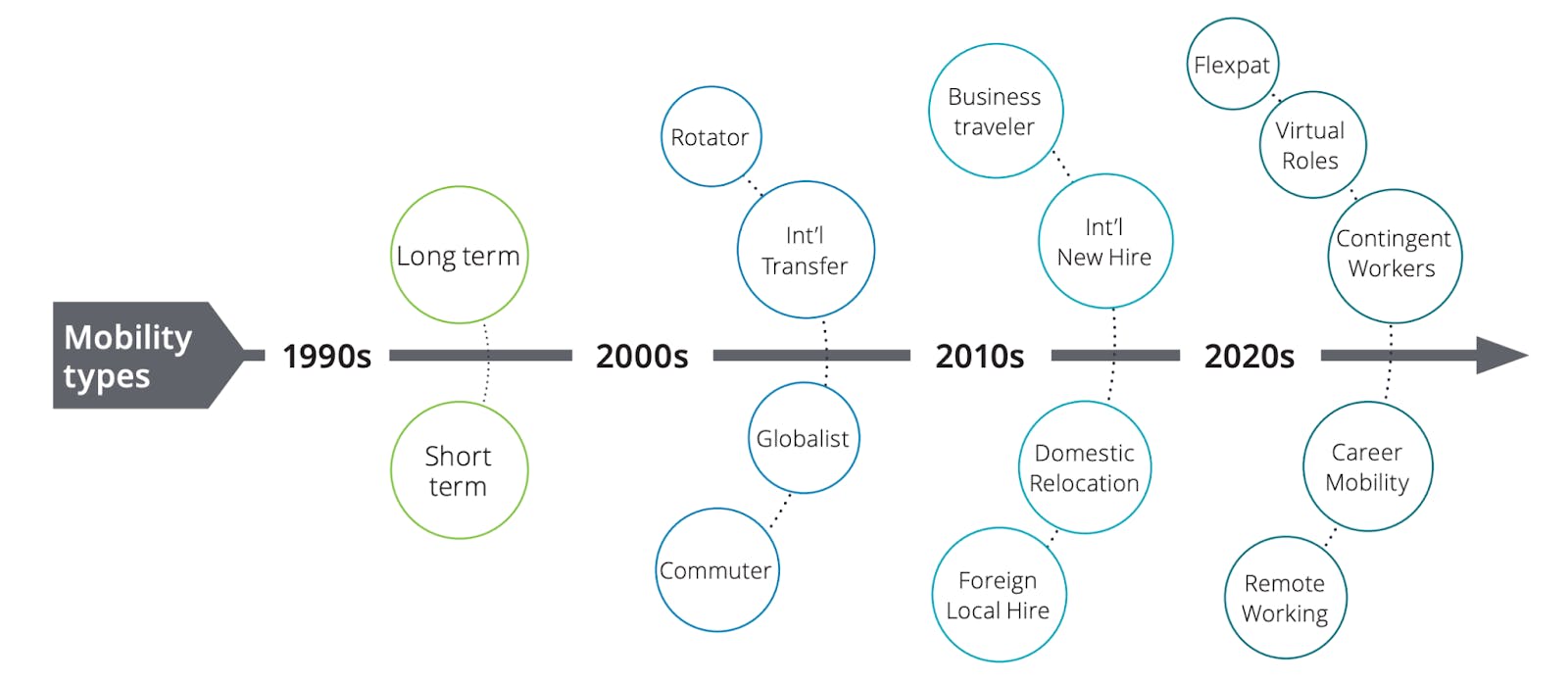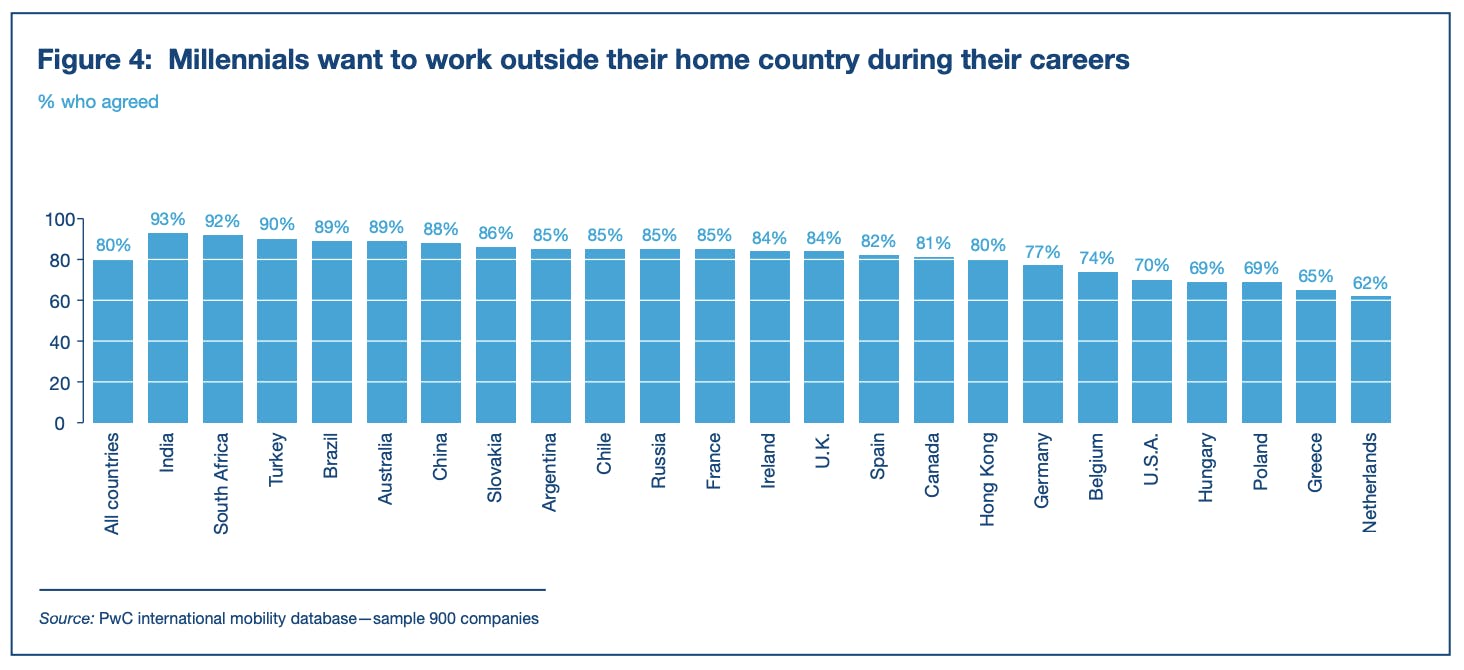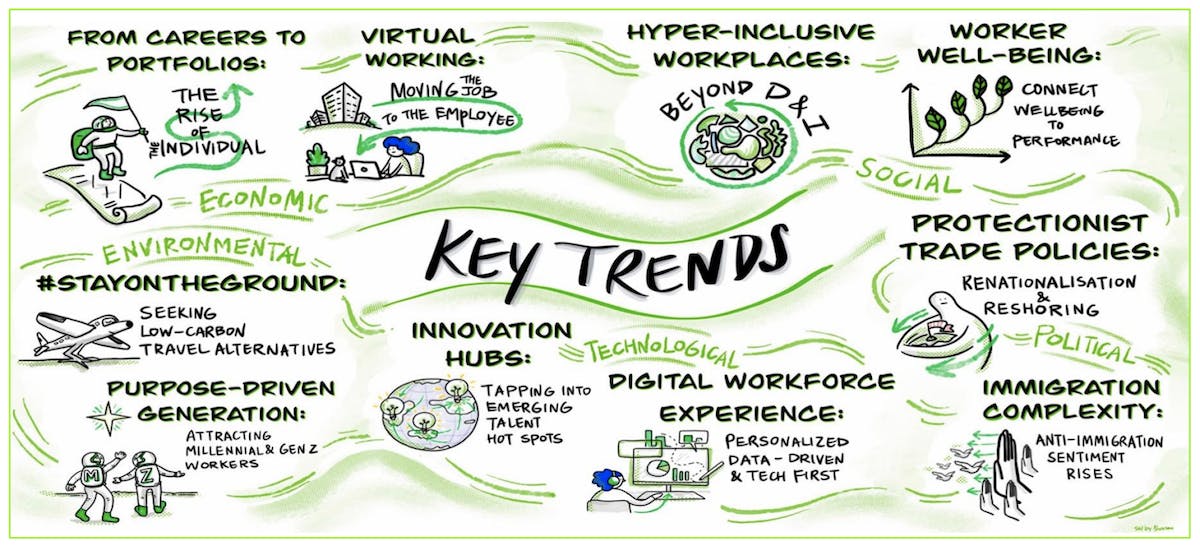I grew up in a world without borders. My family lived in Germany, five minutes from the Danish border which we crossed almost weekly. Being an EU citizen, I had a lot of privileges many others aren’t able to enjoy.
I only started experiencing mobility struggles when leaving Europe, having spent a school year in Argentina, travelled to the Dominican Republic, lived and worked in China, and visited the United States. All of these experiences taught me that immigration isn’t fair; it’s quite random and extremely unpredictable.
Over time I developed a passion for global mobility and have seen it transform from something only accessible for the lucky few to the new normal in modern careers – which can only be a good thing. In its current definition, global mobility makes societies more tolerant, gives everyone access to equal opportunities, and helps fight the global talent gap.
Ultimately, the modern world is in desperate need of open borders, companies are in need of talent, and talent need access to good opportunities. Global mobility isn’t going anywhere, so how did we arrive here and where is it taking us?
What is global mobility?
At its inception, the term global mobility simply referred to how people traveled, mainly concerning transport. Now, its definition has expanded to include a corporate-based meaning – and that is how people travel for work.
When a company hires someone from abroad, it needs to consider how it can best support its new recruit in obtaining their visas, travel arrangements, housing solutions, and any other local compliance laws like social security numbers and taxes. These challenges comprise global mobility, and companies are usually responsible for handling them – at least, they should be if they want to remain attractive in a competitive global market.
A brief history of global mobility
25 years ago, global mobility researchers asked: How much will people travel in the future and which modes of transport will they use? The term typically referred to transport or migration and was rarely used in the context of work. Even now, typing global mobility into a search engine might land you dozens of results from the likes of McKinsey, discussing the future of electric and self-driving cars.
The concept of global mobility relating to how people move for work is relatively new. Although, that doesn’t mean it hasn’t been happening in some capacity for quite a while.
Back then, global mobility (as we currently define it) was for the lucky few – for senior employees relocating abroad to open new offices or factories, defined as ‘international transfers.’ As time went on, employees might have been sent abroad for short-term international assignments and were often selected based on a critical organisational need rather than a desire to enhance an employee’s skills.
It wasn’t until around 2010 that ‘global talent management’ began taking root in HR departments and experts called upon companies to see global mobility as a strategic opportunity. Jeff Shwartz, Principal with Deloitte Consulting, wrote in 2011:
“Growth and even survival hinges on penetrating and scaling operations in rapidly growing and emerging markets unlocked by globalization… Yet a surprising number of companies continue to handle international assignments in ways remarkably similar to how they operated decades ago.”
In his article, he outlines some of the same challenges we still see today: company execs weren’t sure their global mobility investments would see adequate returns, companies took a one-size-fits-all approach and failed to meet specific talent needs – therefore, unable to meet business goals and retain talent, and global mobility was considered a ‘nice-to-have’ ad-hoc exercise rather than a strategic necessity.
Shwartz wasn’t the only person talking about the need for companies to adopt global mobility as a strategic opportunity. In 2010, authors at the Journal of World Business wrote about the development of global talent management over the previous decade and defined it as:
“Global talent management includes all organizational activities for the purpose of attracting, selecting, developing, and retaining the best employees in the most strategic roles (those roles necessary to achieve organizational strategic priorities) on a global scale.”
At its core, that’s still how we define it – however, the language around global mobility has shifted. Back then, global mobility was about relocating talent to the company’s local office to fill the most strategic roles.
Now, mobility includes a range of employee types (remote, flexible work, and so on), filling any company role, with the employee’s personal needs at the center of the mobility experience. Deloitte sees the future of global mobility as a humanised process, where employers become “more people-centric in designing and managing their mobility programs” and where programs require a more flexible and agile delivery. Ultimately, it’s now considered “more personal than other aspects of the talent lifecycle” and is about bringing work to the people rather than the people to the work.

Where are we now?
We’ve come a long way over the last couple of decades in terms of global mobility. With an ever-intensifying war for talent and increasing talent shortages, it’s becoming the norm for companies to look beyond their borders to fill positions. Here’s what else we’re currently experiencing in terms of global mobility:
Easy to travel and move abroad
In our current age (and not considering the last couple of years), it’s become easier for many to travel and live abroad than ever before. Over the last decade, we’ve seen about a 250 million tourist increase in Europe alone (pre-pandemic, of course).
More millennials are moving overseas for work
It’s not just tourism that has seen an uptick. Nowadays, more young people travel and move abroad for work – 85% say they want to, up from 40% ten years ago! They yearn for a life without borders, searching the world for the right job opportunities that allow them to develop themselves, which is good news regarding talent shortages.

More common for companies to look for international talent
It’s no secret that the world is experiencing hiring gaps across various industries, particularly in tech, which has come to rely on the global talent market to fill positions. In fact, almost two-thirds of Silicon Valley workers are not from the United States. And many more companies around the world fit global mobility programs into their business strategies – often with great success. However, in our current Covid-19 world, filling those gaps with talent from the global market may not be as easy or equitable as it was a few years ago. So, there’s some not-so-good news, too.
Passport power rankings at their widest gap
Despite Covid, many people are willing to move abroad for work – 3 in 5 workers say they want to relocate despite the pandemic. But that doesn’t mean they’ll be able to. Journalists at Henley Global published research indicating that passport power rankings are at their widest global mobility gap in 16 years. Combining strict Covid-19 travel restrictions with the vaccine inequity we’ve seen over the last 18 months has inhibited highly-skilled migrants in emerging markets from accessing life-changing opportunities abroad. As a result, we’ve had to redefine global mobility again and ask ourselves how remote work fits into the equation.
Fitting remote and flexible work into the global mobility equation
In the context of work, global mobility once meant relocating an employee from one relocation to another. Due partly to the Covid-19 crisis, global mobility developments are accelerating. Mobility programs have become human-centred, flexible and agile, working with the employee rather than administering a one-size-fits-all relocation package and leaving it at that. In the interest of talent attraction and retention, that means allowing remote and flexible work options.
Where are we going?
The war for talent is nothing new – the term itself was conceptualised in the 1990s by McKinsey & Company and signified a shift in the perception of what it takes to retain talent. Since then, the ‘war’ has only intensified and continues to do so. With a more globalised workforce, an increasing demand for workers compared with a decreasing supply, a shift in employee demands and trends, and a pandemic thrown in the mix, many of us are left scratching our heads and wondering just how we’re going to overcome our talent shortages. Of course, that’s where global mobility comes in.
New mobility trends
For our current workforce, companies face a whole new range of expectations pertaining to a whole new generation of talent. What they want from companies is so vastly different from what workers wanted 30 years ago. Deloitte recently interviewed over 9000 HR and Global Talent leaders to determine these trends and here’s what they found:

And global mobility is the red thread that weaves it all together. With millennials making up the largest share of the global workforce, they will continue viewing their organisations and the world without boundaries. More likely to begin their careers overseas, the millennial worker will follow interesting opportunities that they can attribute meaning to – wherever that is.
Covid-19 continues to influence how we do business
With borders reopening and some workers going back to the office, we’re not seeing the workforce bounce back to what it once was – although most companies believe business will return as usual. According to PwC, only 1 in 10 believe that the pandemic triggered a fundamental rethink in mobility – and those companies are in for a shock.
Remote work, flexible work and short-term relocations are not going anywhere. In fact, many employees find that they’re more productive working from home rather than in an office – and companies should be ready to accommodate these desires. Afterall, happy employees are retained employees! Some companies seem to get it and, during the pandemic, have taken the time to show how global mobility adds real value to business.

Looking ahead
Ten years from now, global mobility will no longer be a consideration for larger corporations and instead will be embraced by all companies. The market is pulling in this direction for a few reasons: an aging workforce creating larger talent gaps in local markets; it’s becoming easier to travel and live abroad (for many); and now that we’ve seen just how successful companies can be when managing hybrid teams, workers don’t want to go back to how it once was.
This article was originally published on LinkedIn on July 7, 2022.




